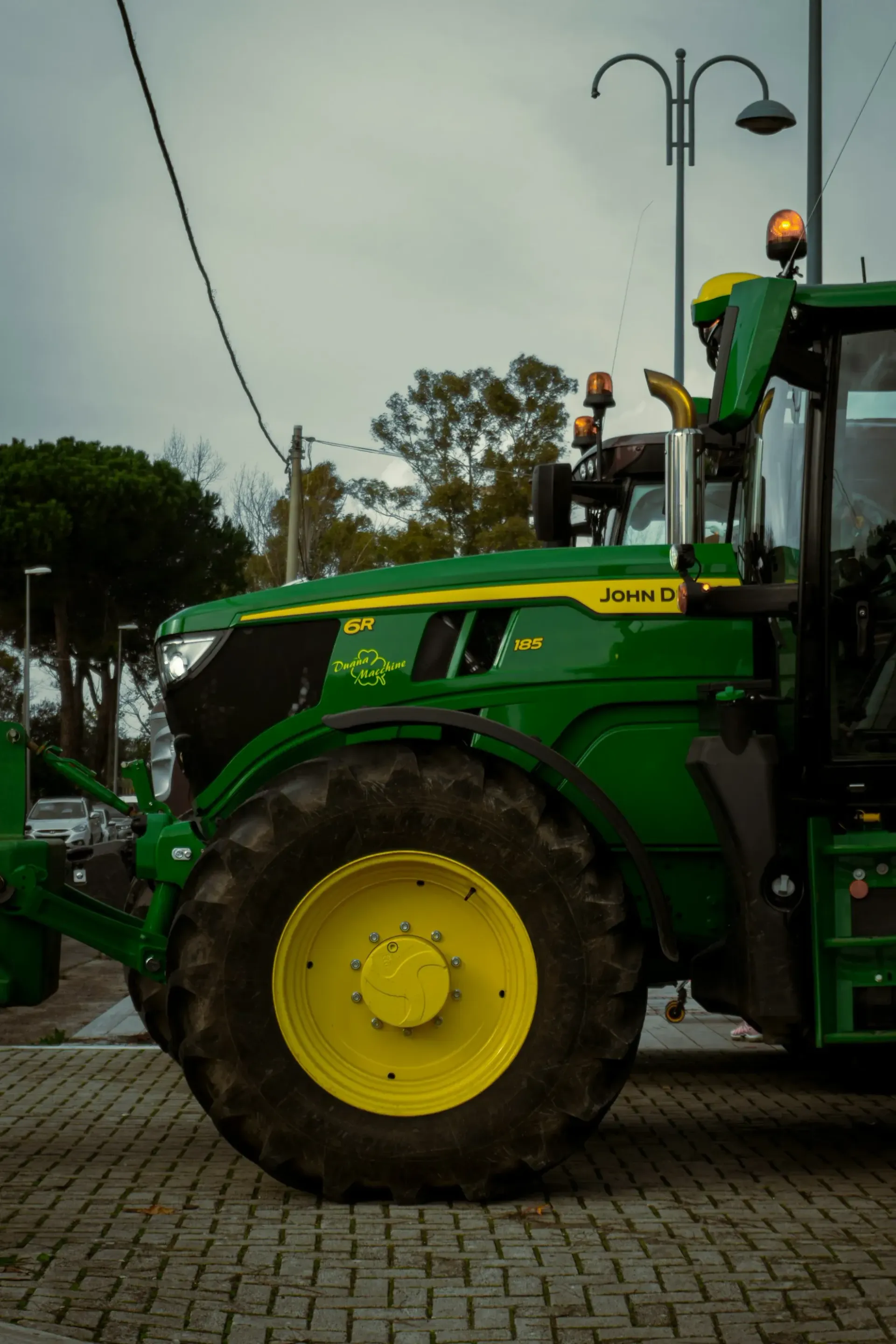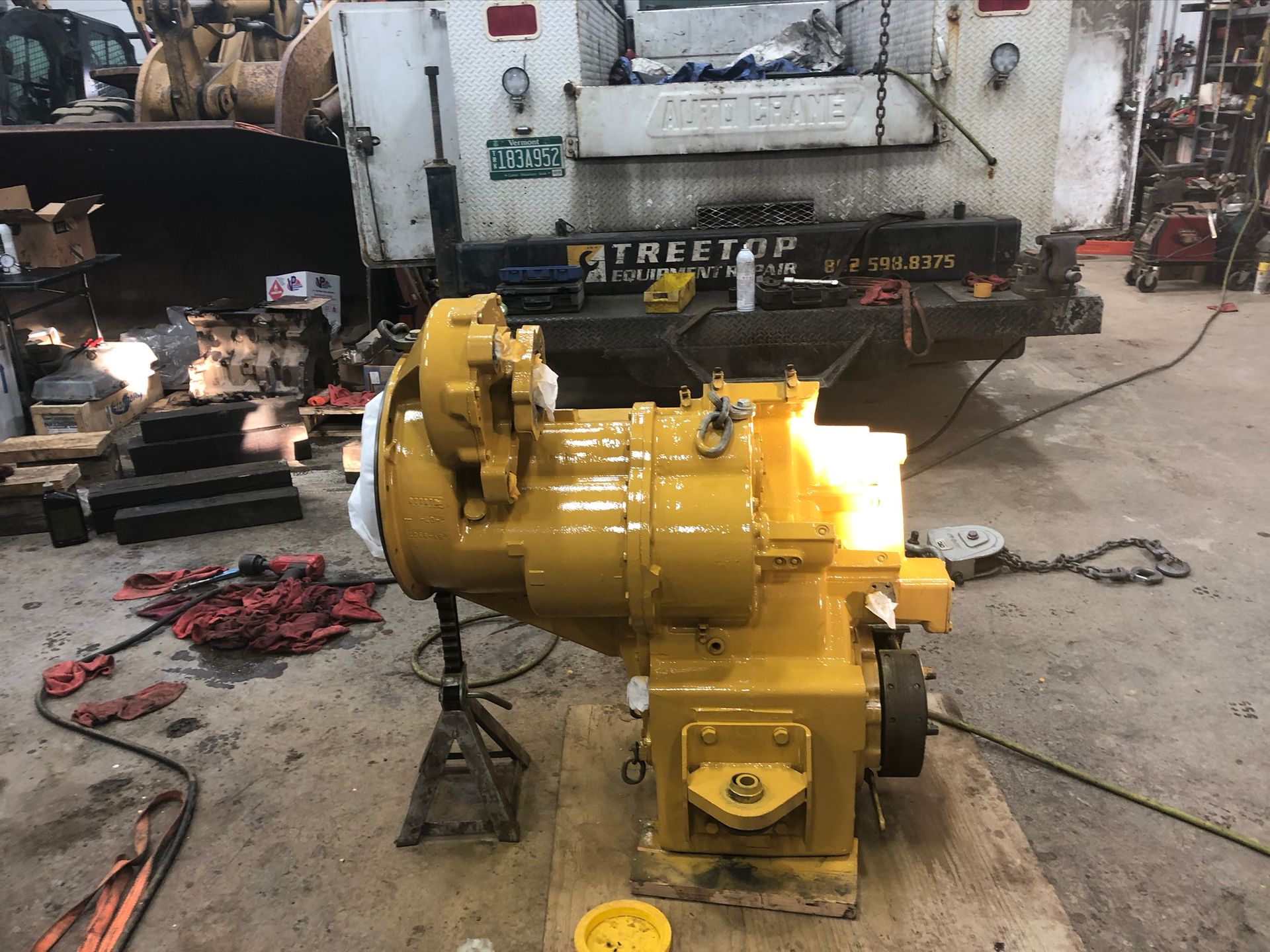Heavy Equipment Maintenance: Routine & Preventative Guide

What is Heavy Equipment Maintenance? A Guide to Routine and Preventative Care
Heavy equipment is a backbone of industries like construction and agriculture. Keeping it in good shape isn’t just smart; it’s necessary. Regular maintenance prevents breakdowns and saves money on repairs.
Maintenance isn’t just fixing things when they break. It’s about routine checks and taking steps to keep your machines running smoothly.
This guide will explain what heavy equipment maintenance is, why it matters, and how you can do it right.
What is Heavy Equipment Maintenance?
Heavy equipment maintenance is the process of keeping machinery in good working condition through regular checks, repairs, and preventive measures. This isn't just about fixing problems; it's about ensuring that the equipment stays reliable and efficient over time.
From construction to agriculture, these machines do the heavy lifting. But without proper maintenance, they can break down, leading to costly repairs and delays. Maintenance involves everything from routine inspections to replacing worn-out parts before they fail.
Why is Heavy Equipment Maintenance Important?
Heavy equipment maintenance is crucial for several reasons. First, it helps in avoiding sudden breakdowns, which can disrupt work and cause significant delays. When machinery fails unexpectedly, it not only halts productivity but also leads to costly repairs that could have been prevented with regular upkeep.
Regular maintenance ensures that equipment operates efficiently. Well-maintained machinery uses less fuel, works smoother, and delivers better performance. This efficiency can lead to cost savings in the long run, both in terms of operational costs and extending the lifespan of the equipment.
Moreover, maintenance is essential for safety. Faulty equipment can pose serious risks to operators and others on site. Regular checks and repairs reduce the likelihood of accidents caused by equipment malfunction.
Overall, heavy equipment maintenance is a proactive approach to managing resources, ensuring safety, and maintaining efficiency. It’s an investment that pays off in sustained productivity and reduced costs.
Types of Heavy Equipment Maintenance
Routine Maintenance
Routine maintenance involves regular checks and services to keep your equipment running smoothly. This includes tasks like oil changes, tire inspections, brake checks, and fluid top-offs. These activities are usually scheduled based on the manufacturer's recommendations or usage hours.
Routine maintenance is the first line of defense against breakdowns. By catching minor issues early, you prevent them from becoming major problems. This not only keeps your equipment in good shape but also ensures it operates at peak efficiency.
Sticking to a routine maintenance schedule helps avoid unexpected downtime and costly repairs. It’s about being proactive rather than reactive, keeping your machinery ready to perform when you need it most.
Preventative Maintenance
Preventative maintenance goes beyond routine checks. It involves taking proactive steps to prevent potential issues before they occur. This can include tasks like replacing parts that are showing signs of wear, checking hydraulic systems, and updating software or firmware in modern equipment.
The goal of preventative maintenance is to catch problems early, reducing the risk of equipment failure. By addressing potential issues ahead of time, you can avoid costly repairs and extended downtime. It’s about anticipating problems and taking action before they escalate.
Preventative maintenance is planned and scheduled, often based on the equipment’s usage, age, or manufacturer’s guidelines. It’s an essential part of keeping heavy equipment reliable and extending its lifespan.
Key Components of a Maintenance Program
Creating a Maintenance Schedule
A well-organized maintenance schedule is the backbone of effective equipment care. This schedule outlines when each piece of machinery should be inspected, serviced, or repaired. It’s not just about keeping track of dates; it’s about ensuring consistency and preventing missed maintenance tasks.
To create an effective schedule, consider the manufacturer’s recommendations, the equipment’s usage patterns, and any past maintenance records. High-use machines might need more frequent checks, while less-used equipment can follow a more extended schedule.
By sticking to a regular maintenance schedule, you minimize the risk of unexpected breakdowns. It ensures that your machinery is always in good working order, ready to handle the tasks it was designed for.
Tools and Technology for Maintenance
Modern tools and technology play a crucial role in heavy equipment maintenance. Diagnostic tools, for example, can quickly identify issues that might not be visible during a routine check. These tools can scan for errors, measure performance, and even predict potential failures before they happen.
Maintenance software is another essential component. It helps in tracking maintenance schedules, keeping records of past services, and alerting you when equipment is due for inspection. This kind of software streamlines the maintenance process, making it easier to manage multiple machines and ensure nothing is overlooked.
Using the right tools and technology can greatly improve the efficiency of your maintenance program. It allows you to be more precise in your checks and repairs, reducing downtime and extending the life of your equipment.
Best Practices for Heavy Equipment Maintenance
Proper Training and Safety
Effective maintenance starts with proper training. Operators and maintenance personnel need to know how to use the equipment correctly and how to spot potential issues. Well-trained staff can perform basic maintenance tasks, like checking fluids or inspecting parts, reducing the risk of minor problems turning into major repairs.
Safety is another critical aspect. Heavy equipment can be dangerous if not handled correctly. Ensuring that everyone involved in maintenance understands safety protocols is essential. This includes knowing how to safely operate the machinery, how to use tools properly, and how to handle hazardous materials.
Training programs should be ongoing, keeping everyone up to date on the latest procedures and safety standards. This not only protects your employees but also helps in maintaining the equipment in top condition, ensuring it runs efficiently and safely.
Record Keeping and Documentation
Keeping detailed records of all maintenance activities is a cornerstone of effective equipment management. Documentation helps track what work has been done, when it was performed, and what parts were used. This history is invaluable for understanding your equipment's condition and planning future maintenance.
Good record-keeping allows you to spot patterns, such as recurring issues with a particular machine. It also helps in scheduling preventative maintenance at the right intervals, based on the actual wear and tear of the equipment rather than just time or usage.
Having a well-documented maintenance history can also be beneficial if you need to sell or lease your equipment. It shows prospective buyers or lessees that the machinery has been well cared for, potentially increasing its value.
Common Problems and How to Address Them
Identifying Common Maintenance Issues
Heavy equipment often faces a set of common problems that, if not addressed, can lead to significant downtime. Some of the most frequent issues include hydraulic failures, engine overheating, and electrical problems. Recognizing these early signs is crucial for preventing more serious damage.
Hydraulic failures might start with leaks or sluggish performance, indicating that seals, hoses, or pumps need attention. Engine overheating can be due to a variety of factors, such as clogged filters, coolant leaks, or fan malfunctions. Electrical issues might show up as intermittent power losses or problems with the control systems.
To address these issues, regular inspections are key. Checking hydraulic lines for leaks, monitoring engine temperatures, and ensuring that all electrical connections are secure can prevent these problems from escalating. When an issue is detected, prompt repairs are necessary to avoid further damage.
Minimizing Downtime
Downtime is one of the biggest challenges in managing heavy equipment. When a machine is out of service, it can delay projects and lead to significant financial losses. The key to minimizing downtime is proactive maintenance and quick response to issues.
First, ensure that routine and preventative maintenance are consistently performed. This reduces the likelihood of unexpected failures. When a problem does occur, having a well-stocked inventory of spare parts can speed up repairs, getting equipment back into operation faster.
Another strategy is to train operators to perform basic troubleshooting. If they can identify and fix minor issues on the spot, it can prevent these problems from turning into major repairs. Additionally, consider using maintenance software that alerts you to potential issues before they cause a breakdown.
By focusing on these strategies, you can keep downtime to a minimum, ensuring that your projects stay on schedule and your equipment remains productive.
Conclusion
Maintaining heavy equipment is essential for keeping your operations running smoothly and avoiding costly downtime. Regular and preventative maintenance ensures that your machinery stays in peak condition, ready to tackle any job. By understanding the importance of maintenance and implementing best practices, you can extend the life of your equipment, improve safety, and save on repair costs.
When it comes to keeping your heavy machinery in top shape, trust the experts at Tree Top Equipment Repair.
We specialize in hydraulic services, heavy machinery maintenance, and specific repairs for excavators, bulldozers, and cement mixers. Our precision diagnostics and rapid turnaround mean your equipment gets back to work quickly, keeping your projects on track.
In addition to construction equipment, we also offer comprehensive services for forestry machinery, trucks, and agricultural equipment. Whether it's servicing log loaders, maintaining diesel engines, or repairing combine harvesters, we ensure your equipment operates efficiently and reliably.
Don’t let equipment downtime slow you down. Contact Tree Top Equipment Repair today and let us keep your machinery performing at its best. Trust us to deliver the expertise and service your equipment deserves.
Our Services
Contact Information
Phone:
Address:
113 Maple Ridge Ln, Huntington, VT 05462, United States of America
Business Hours
- Mon - Fri
- -
- Sat - Sun
- Closed
Tips & Articles
© 2025 All Rights Reserved | Mitch's Autoworks | Privacy Policy


